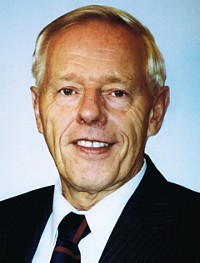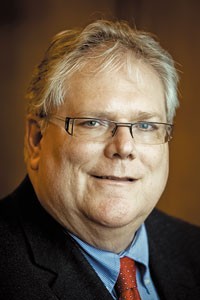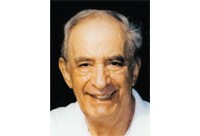Advertisement
Grab your lab coat. Let's get started
Welcome!
Welcome!
Create an account below to get 6 C&EN articles per month, receive newsletters and more - all free.
It seems this is your first time logging in online. Please enter the following information to continue.
As an ACS member you automatically get access to this site. All we need is few more details to create your reading experience.
Not you? Sign in with a different account.
Not you? Sign in with a different account.
ERROR 1
ERROR 1
ERROR 2
ERROR 2
ERROR 2
ERROR 2
ERROR 2
Password and Confirm password must match.
If you have an ACS member number, please enter it here so we can link this account to your membership. (optional)
ERROR 2
ACS values your privacy. By submitting your information, you are gaining access to C&EN and subscribing to our weekly newsletter. We use the information you provide to make your reading experience better, and we will never sell your data to third party members.
Environment
Nobelist Pierre-Gilles De Gennes Dies At 74
Physicist worked in areas of liquid crystals, physical chemistry of adhesives
by Linda R. Raber
May 24, 2007
Pierre-Gilles de Gennes, 74, a pioneer in the field of liquid crystals and recipient of the 1991 Nobel Prize in Physics, died on May 18 at his home in Orsay, near Paris. The cause of death was not reported. In a statement, French President Nicolas Sarkozy described de Gennes as "an exceptional physicist and one of our greatest scientists."
De Gennes received the Nobel Prize for his breakthrough work on liquid crystals???substances that have the properties of both liquids and solids???that are now found in products ranging from alarm clocks to computer and television screens. De Gennes was cited by the Nobel Committee "for discovering that methods developed for studying order phenomena in simple systems can be generalized to more complex forms of matter, in particular to liquid crystals and polymers."
De Gennes was born in Paris in 1932 and received his early education at home. He later attended Ecole Normale Supérieure and received a Ph.D. degree in 1957 while working on neutron scattering at the French Atomic Energy Commission (CEA) in Saclay. In 1959, he was a postdoctoral student with Charles Kittel at the University of California, Berkeley. He joined the faculty of the University of Paris, Orsay, in 1961 and started a research program on the physics of solids.
In 1968, de Gennes changed the direction of his research toward liquid crystals and was named a professor at the Collège de France in 1971. He soon started a collaborative research project on polymer physics with researchers at the University of Strasbourg and CEA. The joint project became known as STRASACOL. De Gennes was named director of the Ecole Supérieure de Physique et de Chimie Industrielle in 1976.
In 1984, de Gennes turned his attention to interfacial problems. His research group defined general laws of wetting and dewetting, explaining how liquid droplets behave on rough and smooth surfaces. In 1989, he began working in the physical chemistry of adhesives and became a champion of soft-condensed matter physics. Fascinated by superglues, he proposed in 1992 that "one day, we might be able to make airplanes with glue instead of rivets, but the problem is that we don't understand how glues interact on surfaces that receive them."
In the late 1990s, de Gennes started working on the design of artificial muscles with investigators at the Curie Institute. At the time of his death, he was working on cellular adhesion and brain function.
De Gennes was a member of the French Academy of Sciences, the French Academy of Technologies, the Dutch Academy of Arts & Sciences, the Royal Society, the American Academy of Arts & Sciences, and the U.S. National Academy of Sciences.
Survivors include his wife and three children.





Join the conversation
Contact the reporter
Submit a Letter to the Editor for publication
Engage with us on Twitter